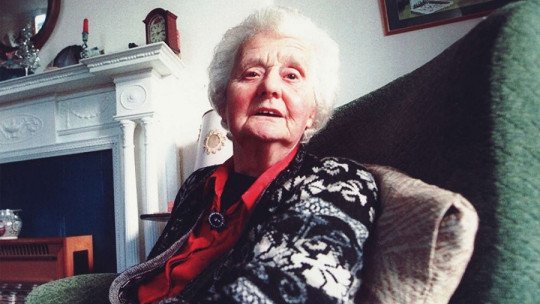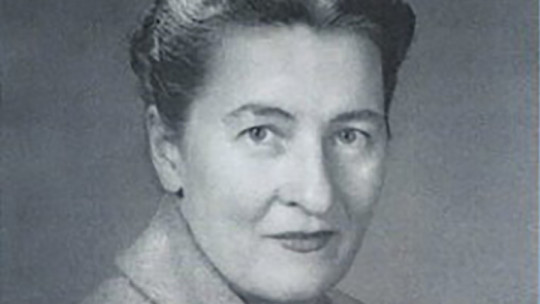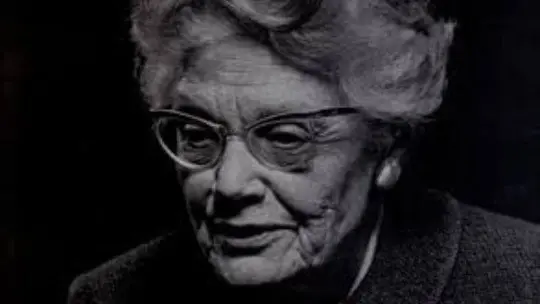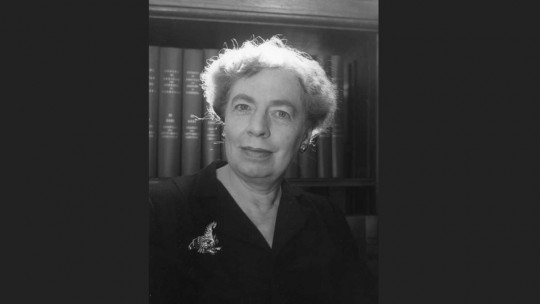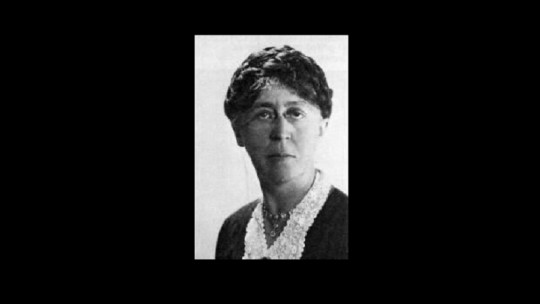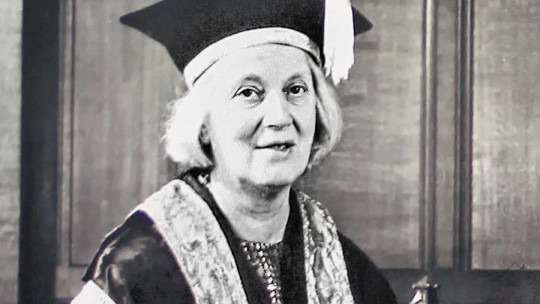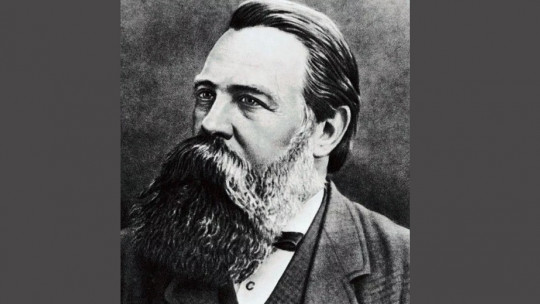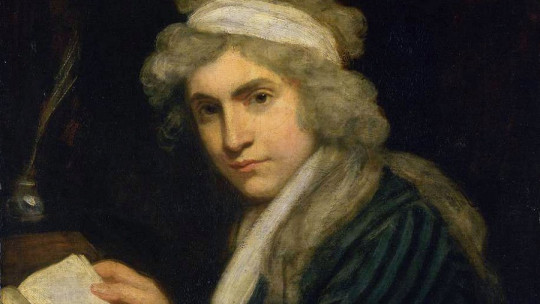
There are women who, throughout history, have championed equal rights and opportunities without distinction of sex.
This is the case of the English writer Mary Wollstonecraft. In this article we will review her life to better understand the aspects that marked her life and what her contributions were to what is known today as feminism; we will do it through a summary biography of Mary Wollstonecraft
Brief biography of Mary Wollstonecraft
Mary Wollstonecraft He was born in 1759 in the city of London, England Although in her early years, this family had a reasonably good economic level, a series of bad decisions by her father led to their ruin, which curtailed Mary Wollstonecraft’s chances of receiving a large inheritance in the future. future. Added to this was that her father was a person who drank regularly and when she did so he physically abused his wife.
Childhood and youth
From her youth, Mary Wollstonecraft was already involved in the search for women’s freedom and equal rights In fact, she managed to get Eliza, her sister, to leave behind a life that did not satisfy her, starting another one away from her husband and son, which caused her to feel the rejection of society and find herself forced into a series of precarious jobs during the rest of his life.
There were two friendships that marked the life of Mary Wollstonecraft. The first of them was Jane Arden, whose father introduced both to a scientific and intellectual environment that further awakened Mary’s concerns The friendship was so intense that Mary Wollstonecraft even considered that what she felt was romantic love for Jane Arden, even showing possessive and jealous behavior towards her.
The other person who left a mark on Mary Wollstonecraft was Fanny Blood, with whom she even They came to develop a life plan together, not as a couple, but with mutual support on an economic and, above all, emotional level, something truly transgressive for the time in which they lived. However, this plan was truncated because in the end, for Fanny Blood, the traditions and social norms of her times outweighed her.
However, this did not prevent them from continuing a strong friendship that would last a lifetime, and in which they even collaborated to build a school. Fanny’s health was always quite delicate, so she traveled with her husband to different places in Europe in search of the best doctors. They finally settled in Lisbon, where Mary Wollstonecraft moved to be able to be with her friend and give her the care she needed. Sadly, Fanny could not overcome her illness and she passed away.
First works
The death of Fanny Blood would be an event that would mark Mary Wollstonecraft for the rest of her life. In fact, the sadness in which she found herself plunged is clearly reflected in the plot of the first of her novels that she wrote in the years to come. After Fanny’s death, Mary would return to her native country and begin a new profession as a governess to the distinguished Kingsborough family.
This work allowed him to develop one of his most important works, Reflections on the education of daughtersand also in another, original stories. In both volumes, Mary Wollstonecraft deals in detail with issues concerning etiquette and morality, which quickly became popular, since middle-class families were very interested in learning everything possible about this topic.
Mary Wollstonecraft She makes the decision to abandon her profession as a governess and dedicate herself completely to writing, carrying out translation work and literary reviews that allowed him an intellectual enrichment that would later be reflected in future works. At that time she began a romance with Henry Fuseli, an artist who was already married.
Wollstonecraft proposed a romantic relationship of what today we would call polyamory, between the three parties, but Henry’s wife flatly refused, which also meant the end of the relationship as lovers between Mary and him. After this disappointment, Mary Wollstonecraft would move to France and publish another of her most notable works: Vindication of the rights of manwhich would be followed shortly after by what is possibly his greatest work: Vindication of women’s rights.
Stage in France and first couple
Once this book was published, Mary Wollstonecraft was already a figure of activism for equality, also impregnated with the atmosphere of social change that reigned at the time of the French Revolution. So She met the American Gilbert Imlay, with whom she would have her first daughter, Fanny Imlay, named in honor of her late friend. Shortly after she would publish another great work about the time she was living in: A historical and moral vision of the origin of the French Revolution.
When the war between France and England began, and she was a British citizen, they established themselves as a married couple, despite not being legally married, in order to avoid any possible retaliation for their citizenship. With an increasingly tense situation, they moved to London. However, this family would not last long, because Gilbert abandoned them for another woman, which led Mary Wollstonecraft to attempt suicide by poisoning from which he barely escaped.
In later works, Mary spoke of this event as something absolutely rational and premeditated, a logical consequence of the events she experienced, and not as a visceral act, the result of desperation and spite. After a brief period in which she attempted to reestablish her relationship with Gilbert Imlay, traveling with him through the Scandinavian countries, the relationship was permanently dissolved.
Second couple and death
After the end of her turbulent marriage, Mary Wollstonecraft She focused again on her role as a literary author, interacting with other British authors, among whom she met William Godwin, the one who would ultimately become his great love. Godwin claimed to have fallen completely in love with Mary while she was reading her work, Letters written in Sweden, Norway and Denmarkwhere she recounted the pain that the end of her relationship with Imlay caused her.
This new love led to Mary Wollstonecraft’s second pregnancy, which led them to legally formalize the marriage, a fact that revealed that Mary and Gilbert had never actually married, which was really scandalous for such a puritanical society What was England like in the 18th century? Some friends even refused to speak to them after this, something unthinkable in our days.
His death
Months later would come the sad death of Mary Wollstonecraft, who It occurred due to an infection suffered while giving birth to her second daughter, Mary Shelley (who in her adult life would become a famous writer, author of a multitude of works, including her best-known novel, Frankenstein). There were eleven days of agony, suffering the consequences of septicemia caused by childbirth, until finally, Mary Wollstonecraft died.
This dramatic death left William Godwin devastated, who stated that he could never be happy again after the loss of his beloved. Months later he would publish the work Memoirs of the author of Vindication of the Rights of Women. It was a sincere work written from the heart, but that did not mean that it was free from controversy, since it brought to light different events that until then were only known to herself and the people directly involved.
For example, it was as a result of this biography that society discovered that Mary Wollstonecraft’s first daughter was the result of an illegitimate marriage, or even that she had attempted to take her own life. Controversies aside, these writings made clear Wollstonecraft’s strong personality and values, which would remain for posterity, and she is today considered a pioneer of the feminist movement.
Although the memoirs published by her husband initially caused Mary Wollstonecraft’s reputation to be questioned, the truth is that were the trigger for her figure to later be popularized for her proposals on women’s rights in a society as conservative as Great Britain at the end of the 18th century, being a pioneer in most of these approaches.
Therefore, we could not understand today many of the advances achieved in the total equality of all citizens if we did not take into account the influence of such important figures as Mary Wollstonecraft, who suffered the rejection of society for achieving progress for generations. coming. These lines serve as a tribute to her figure, therefore.

